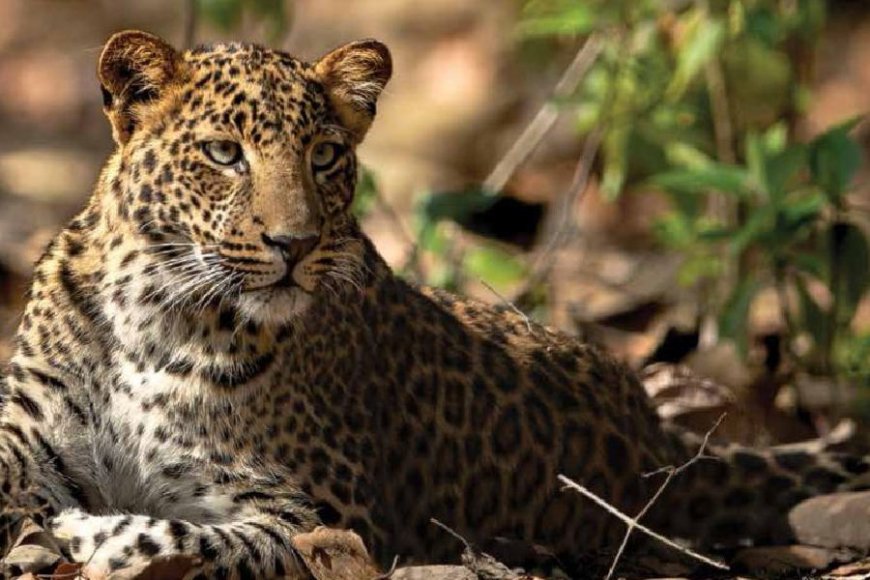India's Leopard Population Shows Growth, But Concerns Remain
Numbers Up, But Poaching, Human Conflict Pose Challenges

Over the last four years, the estimated wild leopard population in India has increased by roughly 1,000, amidst worries about their presence in areas where humans predominate and their potential to kill people or animals.
According to the Union Environment Ministry, the country's most recent assessment of the leopard population produced an estimate of 13,874 in 2022 as opposed to 12,852 in 2018. This information was released on Thursday.
In a paper outlining the estimating exercise's findings, the ministry said that the population during the previous four years has been "stable." The population is constant, "indicating that growth is minimal and that the (leopard) population is likely getting impacted by people in multiple use areas, in comparison to the tiger," according to the report.
According to the ministry, commercial poaching and human revenge against leopards seem to be the most plausible causes of the constant population, even if current trends in leopard poaching are unclear.
With a projected population growth rate of 2.8 times, from 83 leopards in 2018 to 233 in 2022, North Bengal has shown the fastest rate of rise. Between 2018 and 2022, the population of the northeastern hills and Brahmaputra floodplains rose by 2.4 times, from 141 to 349.
Since the Himalayas and other semi-arid parts of the nation, which are not tiger strongholds, were not tested, the new overall estimate, according to the ministry, encompasses around 70% of the nation's leopard habitat.
The government said that the leopard population has increased by 1.08 percent annually throughout the regions studied between 2018 and 2022. However, this increase hasn't been consistent. While population growth in central India and the Eastern Ghats is the greatest at 1.5% year, it has decreased by 3.4% annually in the Shivalik hills and Gangetic plains.
With an estimated 3,907 leopards, Madhya Pradesh has the highest population. It is followed by Maharashtra (1,985), Karnataka (1,879), Tamil Nadu (1,070), and Rajasthan (721).
The 2022 population estimating project was carried out by the National Tiger Conservation Authority and the Wildlife Institute of India, Dehradun. It involves setting up cameras at over 32,800 places and conducting foot surveys across 641,000 km in order to detect indications of carnivores and gauge the amount of prey.
The expansion of human populations into leopard habitats and the resulting increase in human-leopard conflict occurrences are the background against which the population is growing.
According to a ministry study summarizing the results of the population estimating exercise, there have been occasions when these confrontations have become violent, with people taking retaliatory action against leopards that have hurt or preyed on livestock.
The research highlights the need for scientific studies to get a greater knowledge of leopard behavior and their natural history in order to develop appropriate management measures, noting an anticipated rise in the number of leopards in the future.
Although several studies conducted recently around the nation have added to our knowledge of leopard numbers, how they utilize their habitat, what they eat, and interactions between humans and leopards, there are still significant gaps in our understanding of how these animals behave in various natural settings.
In 2020–21, Pritha Dutta, an assistant professor at The Energy and Resources Institute School of Advanced Studies in New Delhi and an expert in human–environment interactions, conducted a study that found 439 cases of livestock losses caused by leopards in ten villages near Bengal’s Buxa tiger reserve.
The International Big Cat Alliance is a worldwide project that aims to strengthen conservation efforts to safeguard the tiger, lion, leopard, cheetah, snow leopard, puma, and jaguar. The Union cabinet approved a one-time financial contribution of Rs 150 crore for the alliance on Thursday.
Such an alliance was requested in 2019 by Prime Minister Narendra Modi, who also announced it in April of the same year to mark the 50th anniversary of India's Project Tiger.























































